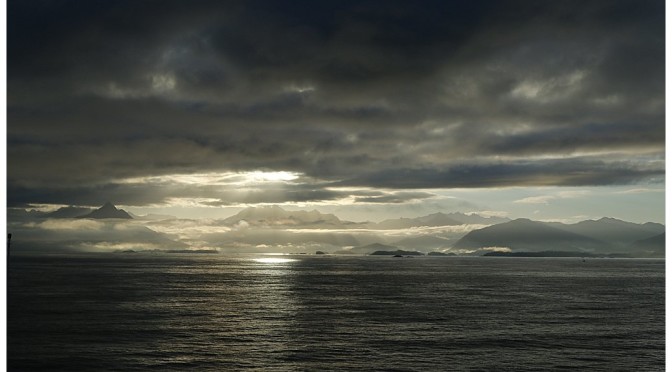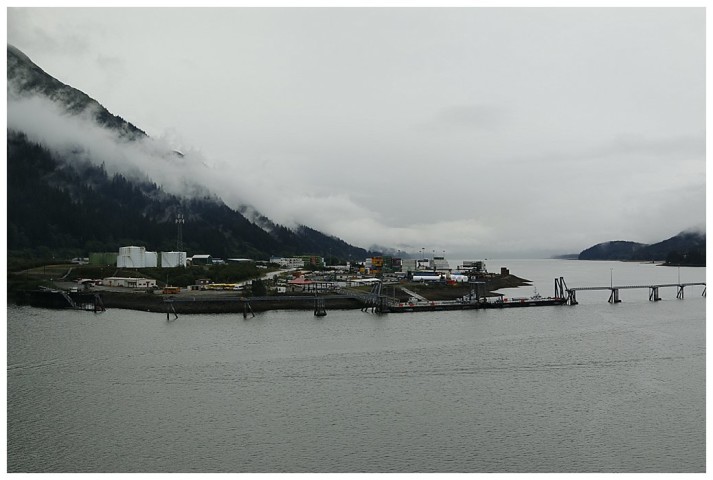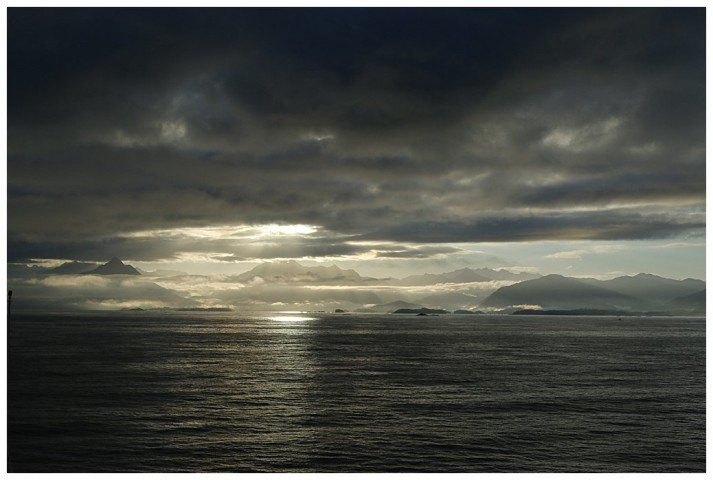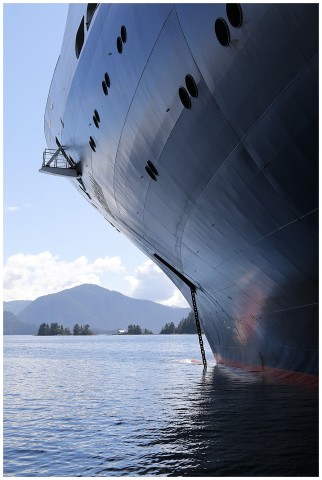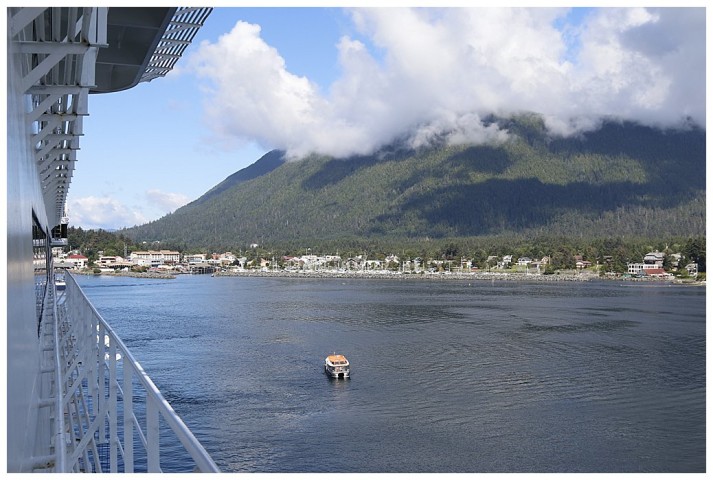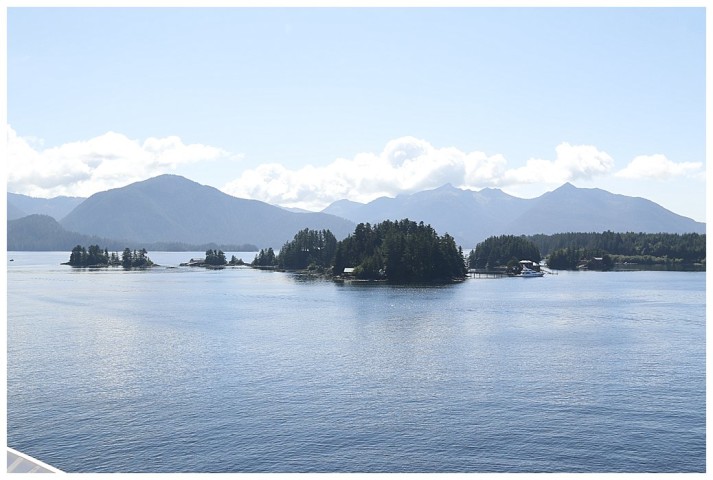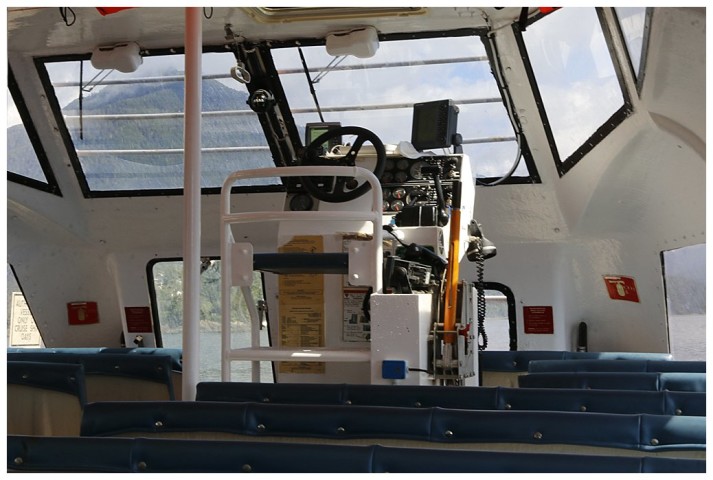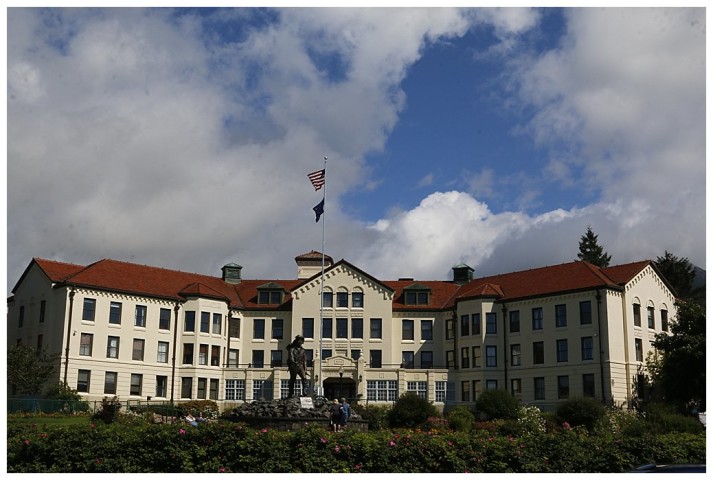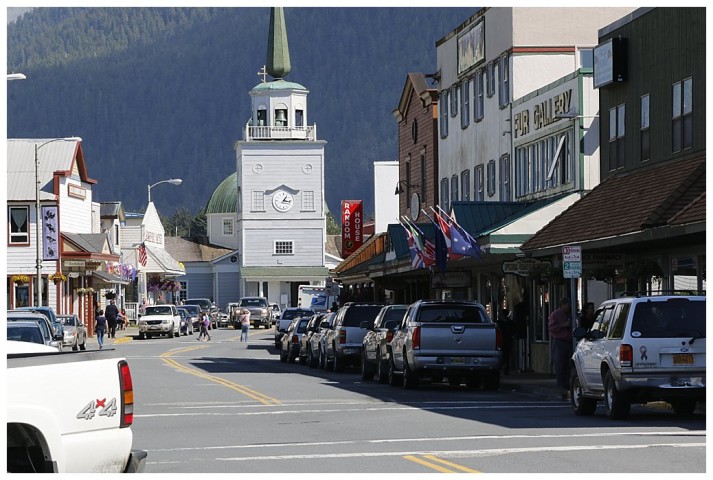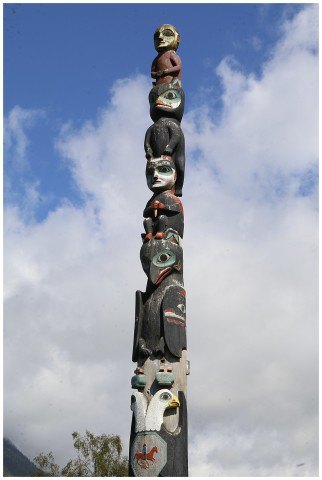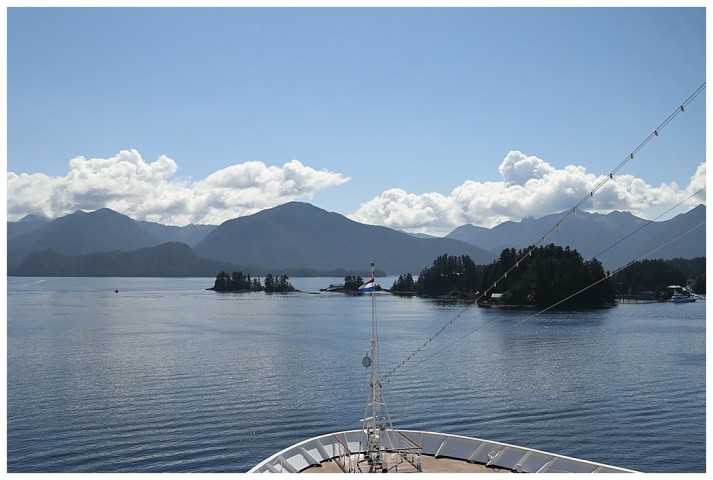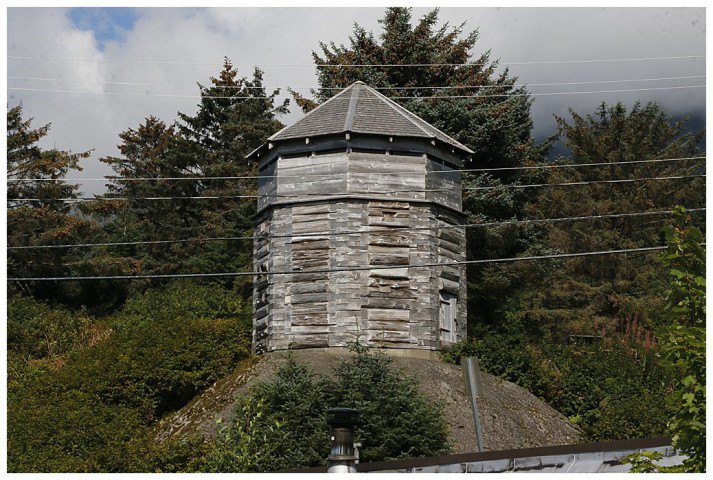Quote from Olly. “How does Gramps have enough time to do 3 jobs”? Sam looked a bit confused, so he explained: “a Captain, a Gramps and a Daddy”? 🙂
Now you’ve been updated with the grandchildren, I can move on to Nautical matters. Before I do so, thank you for all your wonderful comments, quite frankly I was stunned to see so many “welcome back’ comments, it gladdens my heart that this blog is so well received.
Before I take you to Sitka, some interesting photos of Juneau as we left.
This is the ‘Rock Dump’, now a massive storage area and a Cruise ship dock. The rock is in fact the ‘tailings’ from the Gold mine, in the hill to the left of the picture, (no longer in use). One can only wonder how much gold actually came from it all.
Opposite the Rock dump on the other side of the Gastineau channel, is this strange building. It is in fact the top of a ventilation shaft, supplying the (old) mining tunnel beneath it.
Early in the morning, we rounded Cape Edgecombe and entered Sitka sound. The weather had changed overnight, the rain had moved east and the sun was threatening to come out, a wonderful change from the past 2 days.
The salmon are running and as a consequence the Sound and the seas near Sitka were full of fishing boats. Here they line-fish, no nets or trawls, instead running a long-line from both sides of the boat. On theses lines are hundreds of fish hooks and flashing ‘lures’ to attract the fish. Catching the salmon this way is akin to using a fishing rod, except larger of course. This method saves damage to the fish.
Swinging at the ‘Twins’, we backed into the Inner anchorage. This is a ‘fine’ weather anchorage, only in the lightest wind conditions can one use this. The alternative anchorages 2 and 3 are far too distant from the tender pier ashore. It takes an age to take guests ashore, should one have to use them.
With 3 shackles of chain out (270 feet), we remained nicely in position during the day, using the joystick on ‘auto’ heading to keep her steady in the restricted anchorage area.

The orange circle is our swinging area while lying at anchor; the tender dock is astern of us, towards the 10 o’clock position and we backed in from the 4 o’clock position.
The natives of Alaska, the Tlingit were living here when the Russians arrived, their goal? Sea Otter pelts, they slaughtered hundreds of thousands of them for the fur, all awhile battling the Indian tribe. After several battles, the Russian left however they returned in force and overwhelmed the tribe. Thereafter they made an uneasy peace. Much of the area’s landmarks are named after Baron Baronov, who governed the area.
